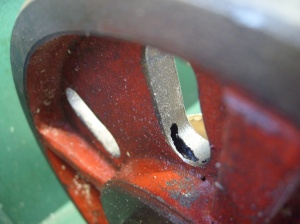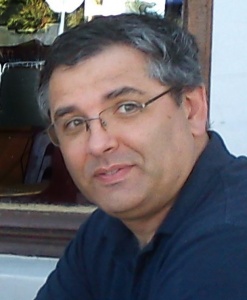The need to comprehend and even embrace defects is not only a matter of life philosophy. It has many crucial implications. Dr. Artem Abakumov of the University of Antwerp , Belgium, discusses in his guest lecture “Defects and Their Association”, the “hidden factor” behind materials’ properties.
When: October 2, 2014; 13.30 – 15.00
Where: Beijing-1 Auditorium, China cluster; Skolkovo School of Management
SEMINAR ABSTRACT:
The macroscopic behavior of many materials largely depends on the nature and concentration of the defects, their mutual interaction and ordering patterns. Association of the defects can lead to complex microstructural states that are strikingly different from an averaged picture based on random distributions of defect species.
Often such short- or long-range ordered states are “hidden” because of high spatial inhomogeneity of the ordered states or intricate patterns of occupational and displacive incommensurate modulations. In this talk I will demonstrate that unexpected ordering patterns of defects can be uncovered in many well-characterized materials with a combination of advanced local and bulk structure characterization techniques and modern crystallographic approaches.
The pivotal role of intersite repulsion, local strain, lone electron pair effect and Jahn-Teller distortion in the collective behavior of the structural defects will be exemplified using the mixed ionic-electronic conductor Sr4Fe6O12 with the perovskite and rock-salt intergrowth structure, Pb-doped anion-deficient derivative of the multiferroic BiFeO3 perovskite and cation-ordered layered rock-salt type Na-ion battery material NaMnO2, with the emphasis on the link between the defect structure and the properties.
With these examples, I will also illustrate how powerful the modern transmission electron microscopy methods can be in gathering the structural and chemical information on the atomic scale.
SPEAKER INTRODUCTION:
Dr. Artem Abakumov
EMAT, University of Antwerp, Groenenborgerlaan 171, B-2020, Antwerp Belgium
Department of Chemistry, Moscow State University, 119991, Moscow, Russia
Dr. Artem Abakumov graduated from the Department of Chemistry at Moscow State University in 1993 and received his PhD in Chemistry from the same University in 1997. He spent about three years as a postdoctoral fellow and invited professor in the Electron Microscopy for Materials Research (EMAT) laboratory at University of Antwerp and joined EMAT as a research leader in 2008. His research is focused at understanding the crystal and defect structure of inorganic solids and linking this knowledge to designing new materials and getting deeper insight into their functional properties. His interests comprise inorganic solid state chemistry, complex transition metal oxides, aperiodic structures, conventional and multidimensional crystallography, structure analysis using a combination of transmission electron microscopy, synchrotron X-ray and neutron powder diffraction.
* The Skolkovo Institute of Science and Technology (Skoltech) is a private graduate research university in Skolkovo, Russia, a suburb of Moscow. Established in 2011 in collaboration with MIT, Skoltech educates global leaders in innovation, advances scientific knowledge, and fosters new technologies to address critical issues facing Russia and the world. Applying international research and educational models, the university integrates the best Russian scientific traditions with twenty-first century entrepreneurship and innovation.


